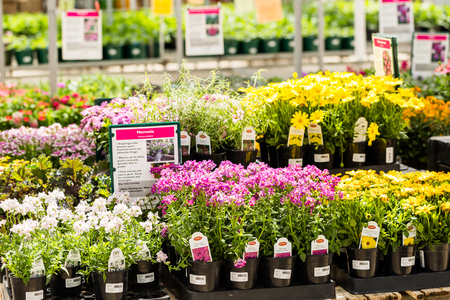3 reasons why brand experience in webshops is important
More and more brands in the garden industry are becoming consumer brands. Weber is perhaps the most extreme example of this but Elho, Big Green Egg and plant concepts such as Addenda are also making considerable progress. By making brands clearly visible in your webshop, you can benefit from the growth of these brands.
But why is brand experience important?
Adding brand experience to a webshop helps to sell more because:
- Brand names give confidence. This is an important aspect, especially for independent garden centres that are not known outside their own region. People don't know your centre yet, but they do trust the brand that is being sold.
- Brand names imply quality: “If you read so much about it, it must be a good product!”. This familiarity ensures that people make purchases sooner.
- Consumers can be brand loyal: once they have a Capi pot, the second pot must also be from Capi because it fits well with it.

Now we are not in favour of focusing everything in your webshop on 1 or 2 big brands, because your store brand is should come first. After all, the name of your store or company is also a brand and your own webshop is the perfect place to communicate it and give it meaning.
Still, you can use the brands you sell to achieve more online & in-store sales
Apply brand experience in your webshop
There are a number of ways to convey brand experience in your webshop. It is important to work consistently and apply the same solution to every brand, to prevent the webshop from becoming cluttered.
We have three examples for you of how you can apply brand experience to your webshop. These three additions to your webshop are simple and you can do it yourself.
1. Add a brand to the product page
The brand must be clearly visible on every product page. We advise you to do this via the logo, which can then link to the brand page (see below). The logo is visual and immediately evokes recognition. Usually, the logo will appear at the top right of the page, near the product name. In the example below you can clearly see the Weber logo on the product page.

2. Brand information tab
More information about the brand can be placed in a tab on the product page. This is pleasant for the visitor because they can then read something about the brand: perhaps it is originally a family business, they grow plants sustainably or the products are made from recycled materials. Whatever it is, a good brand story helps sell products. In this tab, you can also include a link to the brand page.

In case of Weber, you could explain to visitors the US brand basically invented barbecuing as we know it nowadays. They invented the kettle barbecue and are still well-known for it! They go back a long time and have been known for their high-end products and quality - excellent information for your visitors in the form of interesting storytelling.
3. Brand page
Each brand can have its own page so that visitors who are looking for a specific brand can quickly find it. This page will undoubtedly also be found well in Google, above all it ensures a strong brand experience.

What not to do!
In addition to the things you should do, there is also something you should not do: Linking your website to the suppliers’ website. You put in a lot of effort to get visitors to your website and by placing a link, you send visitors away from your own website.
The websites of Weber, Gardena and other brands contain a nice overview of webshops & dealers where their products are sold, so the consumer can easily see where else the product is available. Make sure you keep control over the customer journey and keep visitors on your own website!
Want to know more about brand experience?
Do you want to know more? Then watch the Garden Connect Academy video about working with brands or adding tabs. Or sign up for one of our upcoming online Lunch & Learn sessions: "How to make a webshop product page that converts".



